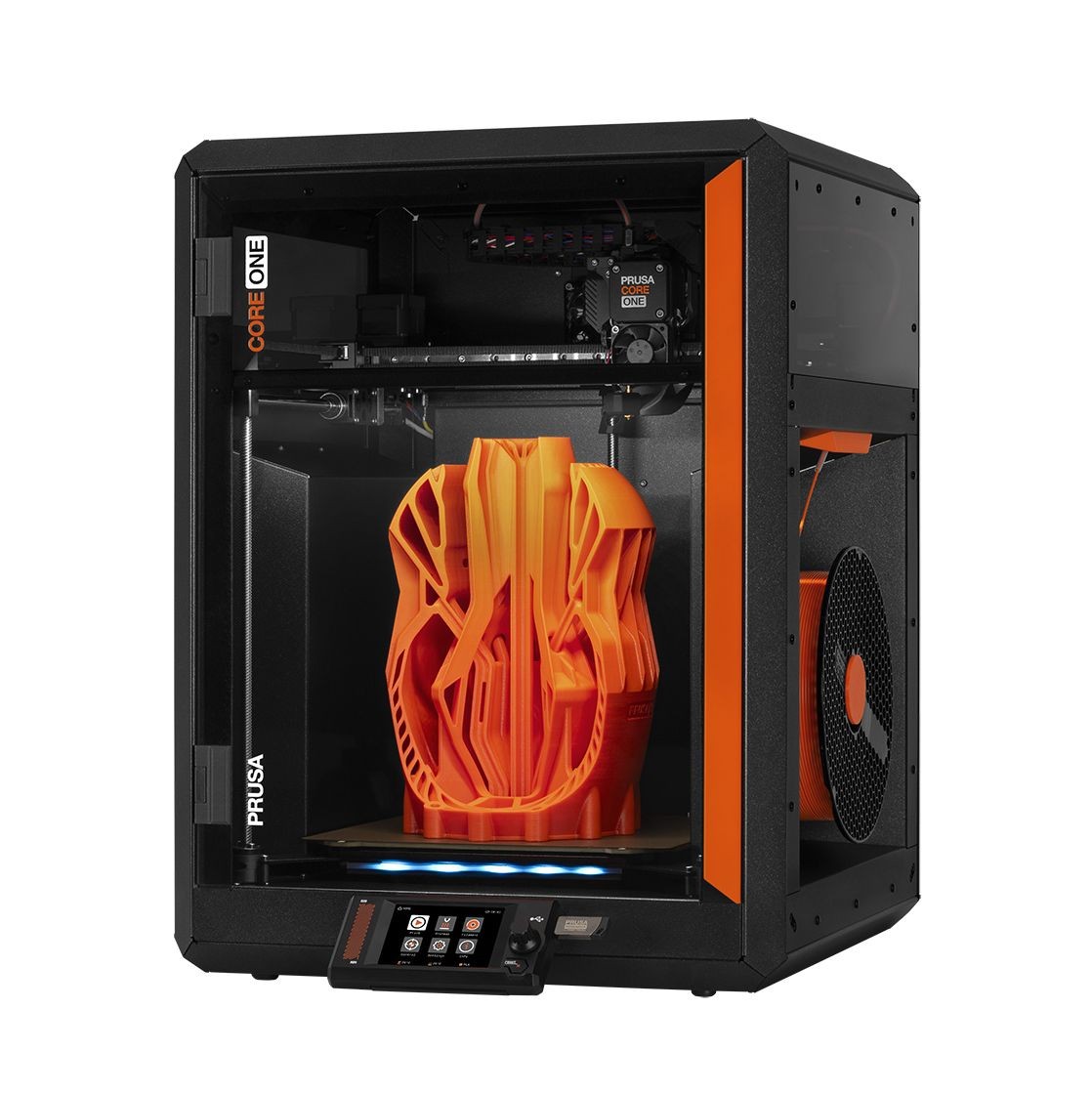Compare H2D vs Core One
Comparison between the best 3D printers
Choose the best 3D printer at the best price. The cheapest 3D printers are here.
Buy a 3D printer here with 3D Fila.
 |
 |
|
| Model | H2D |
Core One |
| Printing Material | Filament | Filament |
| Buy Filament for Bambu Lab H2D | Buy Filament forPrusa Core One | |
| Estimated price | $1899,00 | $1200,00 |
| Manufacturer | Bambu Lab | Prusa |
| Release Year | 2025 | 2025 |
| Print Volume [mm] | 350x320x325 | 250x220x270 |
| Printer Size [mm] | 492x514x626 | 385x340x620 |
| Weight [kg] | 42,3 | 14 |
| Power Loss Recovery | YES | YES |
| Enclosed printer | YES | YES |
| Bed Leveling | Automatic | Automatic |
| Filament End Sensor | YES | YES |
| Bed type | Heated | Heated |
| Power supply system | Direct Drive | Direct Drive |
| Standard nozzle | 0,4 | 0,4 |
| Maximum Nozzle Temperature [°C] | 350 | 300 |
| Maximum Bed Temperature [°C] | 120 | 120 |
| Maximum printing speed [mm/s] | 600 | 500 |
| Filament holder | YES | YES |
| Camera for supervision | YES | YES |
| Recommended filaments | PLA, PETG, ABS, ASA, TPU, PVA, Nylon (PA) | PLA, TPU, TPE, HIPS, ABS, PETG, WOOD, PC, PA, PVA, ASA |
| Recommended slicers | Bambu Studio | Cura, Prusa Slicer, Orca |
| Maximum Resolution [mm] | 0,01 | 0,01 |
| Processor | xBuddy 32 bit | |
| Display | Touchscreen 5'' | Touchscreen 3,5'' |
| Power Supply | 240 W | |
| Connectivity | Wifi, Bambu bus, Cartão SD | SD |
| Operating systems | Windows, Mac, Linux | Windows, Linux e Macbook |
| Date of registration in the system | 2025-03-31 | 2024-11-27 |
| Release date | 2025 | 2025 |
| Extra features | Bambu Labs H2D combines high-speed 3D printing with a chamber heated up to 65 °C, dual extrusion with automatic nozzle switching, an AMS for filament drying and exchange, and AI sensors that detect failures. It offers optional laser and digital cutting capabilities, features intelligent calibration through computer vision, vibration control, enhanced fire safety, and real-time camera monitoring. | The Prusa Core One is a CoreXY 3D printer featuring a robust steel frame, a 3.5" touchscreen, and a heated chamber for technical filaments. It offers 360° cooling for improved print quality and supports upgrades from the MK4S model. With a compact design, a print volume of 270x250x220 mm, and compatibility with the MMU3 for multi-color printing, it stands out for its ease of maintenance, precision, and speeds up to 260% faster than the MK3S+. |
| Support for multiple colors and materials (AMS and CFS) | YES | YES |
Notes * |
||
| Cost-benefit | 7 / 10 | 7 / 10 |
| Hardware | 8 / 10 | 6 / 10 |
| Tela | . | . |
| Print volume | 4 / 10 | 3 / 10 |
| Performance | 5 / 10 | 4 / 10 |
Conclusion |
| In conclusion, both the Bambu Lab H2D and the Prusa Core One present robust options for 3D printing, each catering to different user needs and preferences. The H2D, while more expensive, offers a larger print volume, a higher maximum nozzle temperature, and a multitude of advanced features such as AI sensors, dual extrusion capabilities, and a sophisticated camera system for real-time monitoring, making it ideal for users seeking high performance and versatility. Its emphasis on speed and automation can significantly enhance productivity, especially for demanding projects. On the other hand, the Prusa Core One, positioned at a lower price point, delivers a solid printing experience with reliable performance, a compact design, and support for a variety of materials. It shines in ease of maintenance and is backed by a strong community, making it suitable for both novice and experienced users who appreciate straightforward operation and extensive upgrade options. Ultimately, the choice between the two models will largely depend on individual needs and budget considerations. Users looking for advanced features and higher capability might gravitate towards the H2D, while those prioritizing value without compromising on quality may find the Core One to be the better fit. Both models, however, stand out in their respective categories, providing excellent options for anyone interested in 3D printing. |

